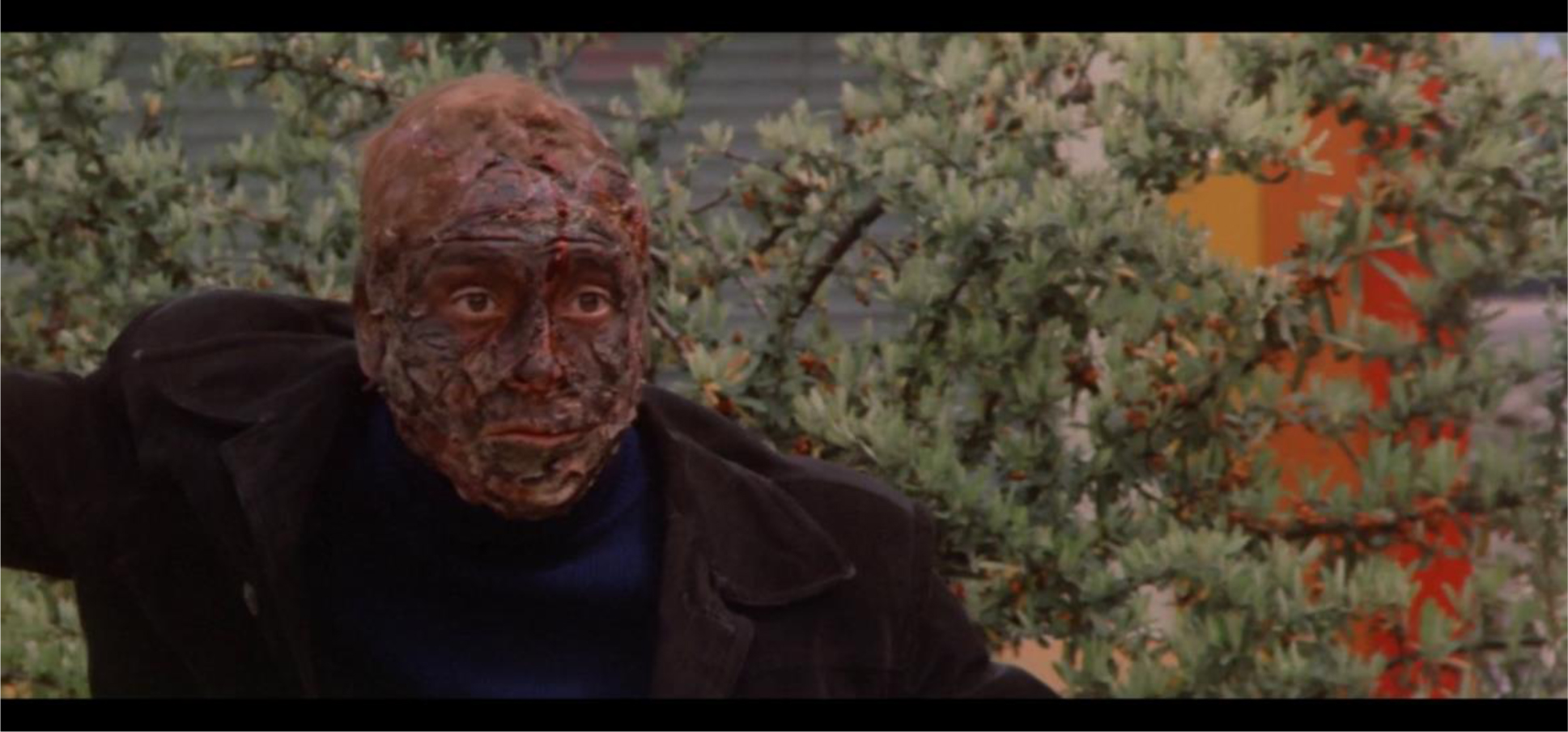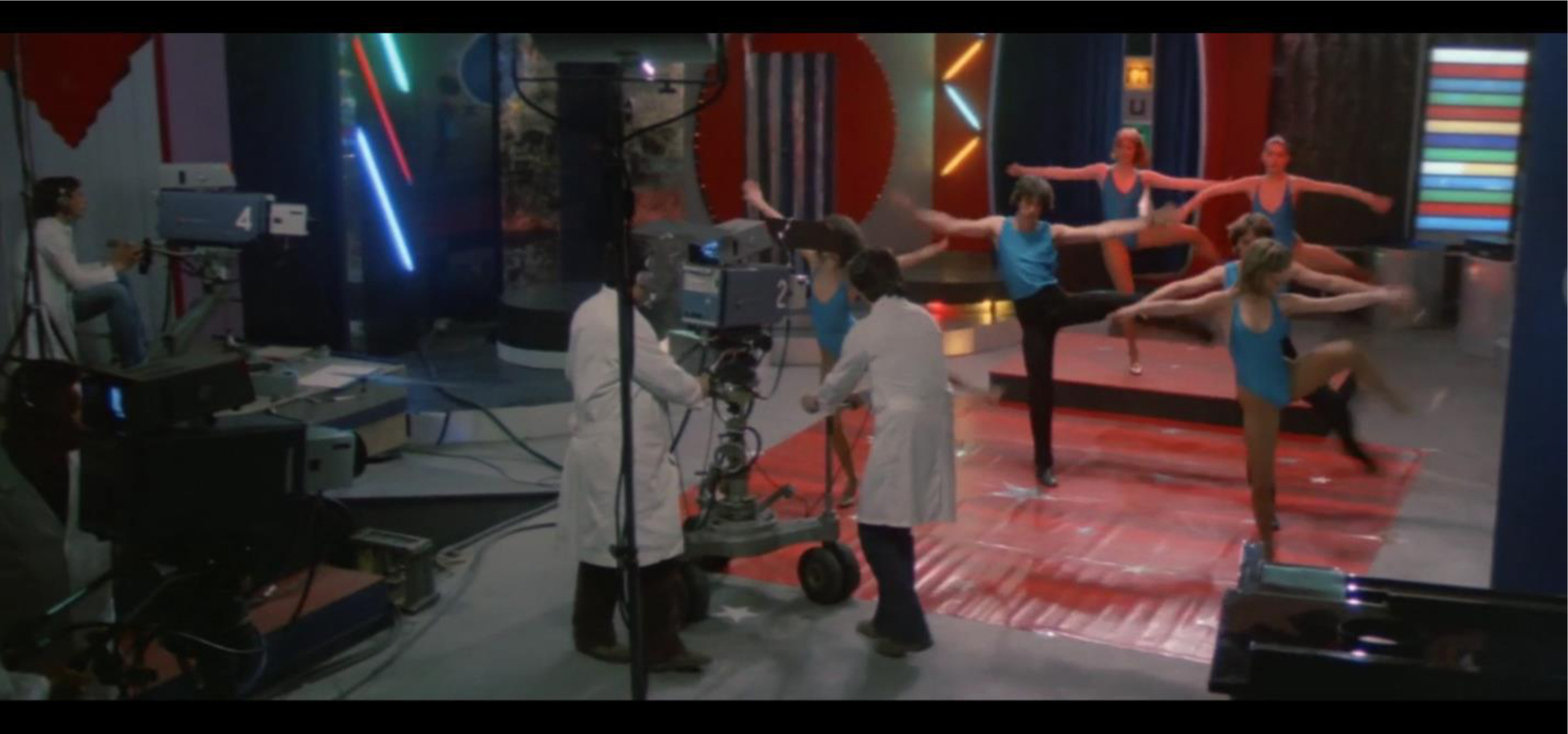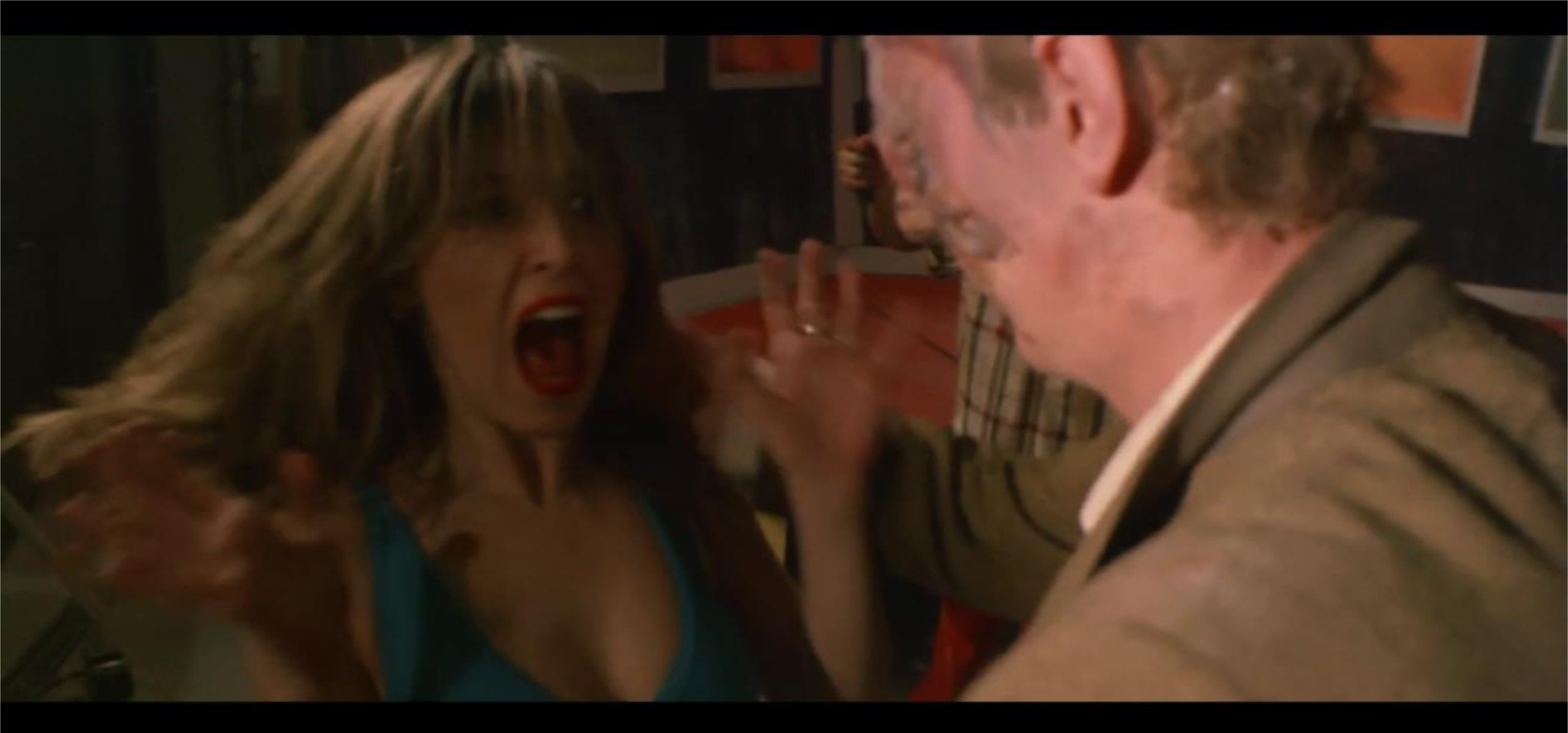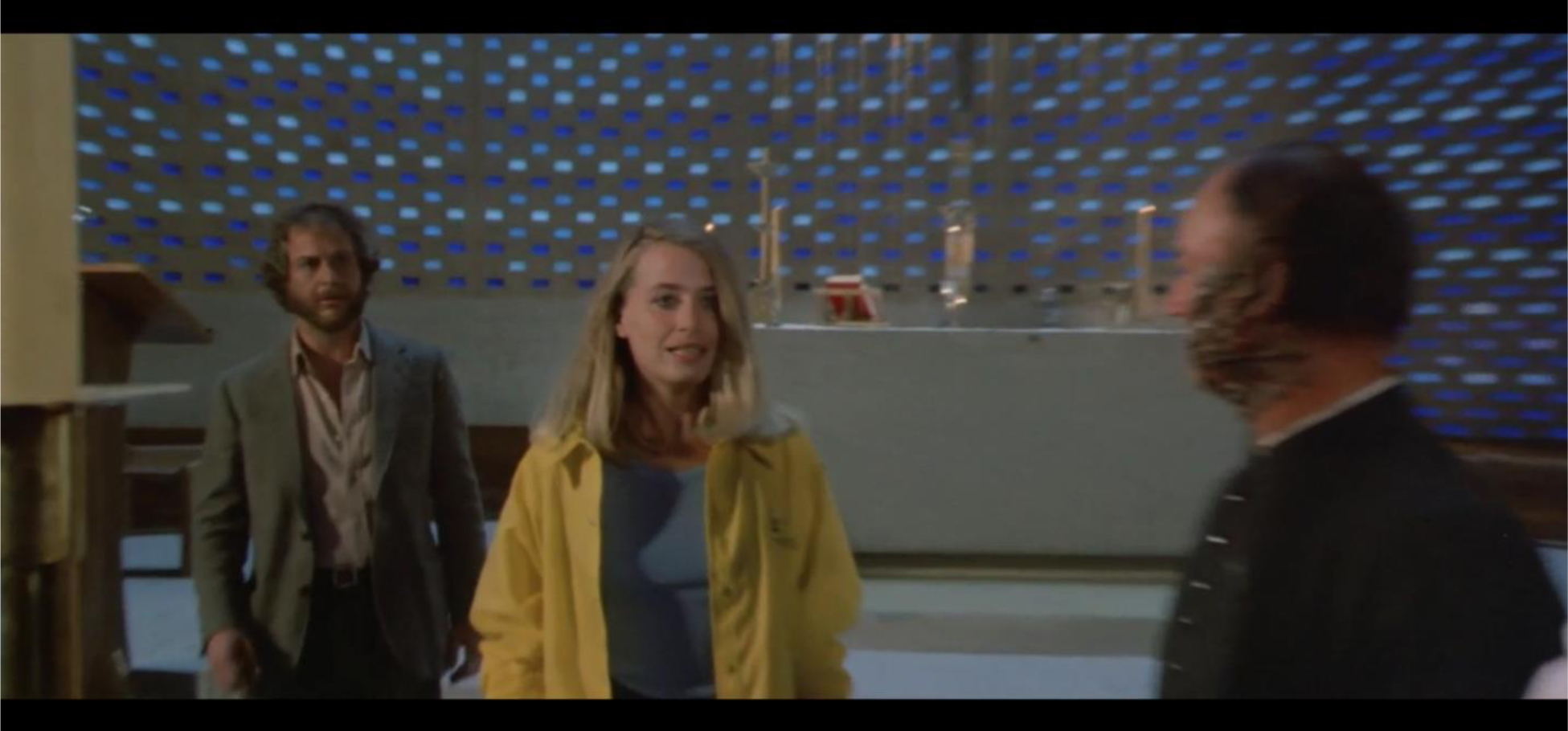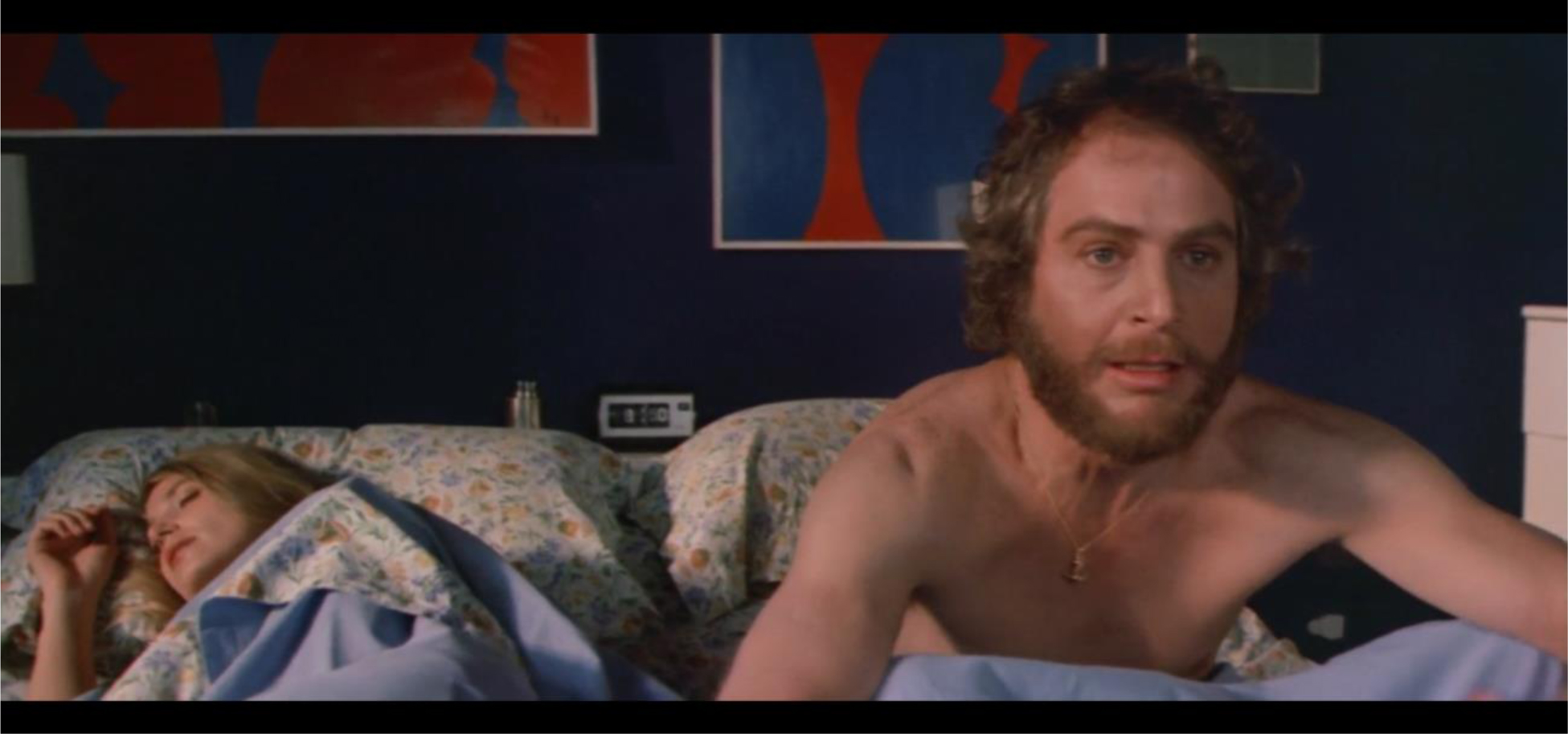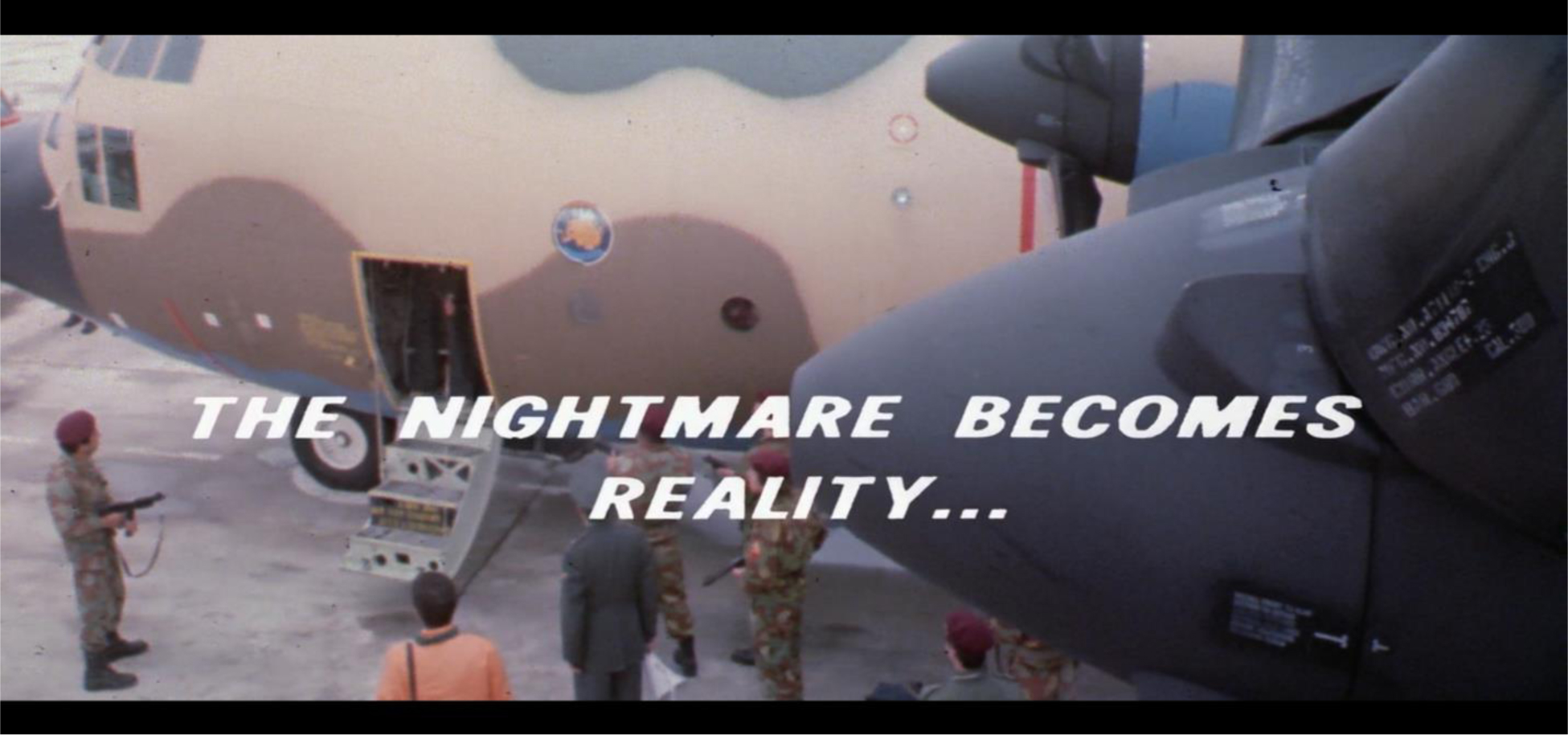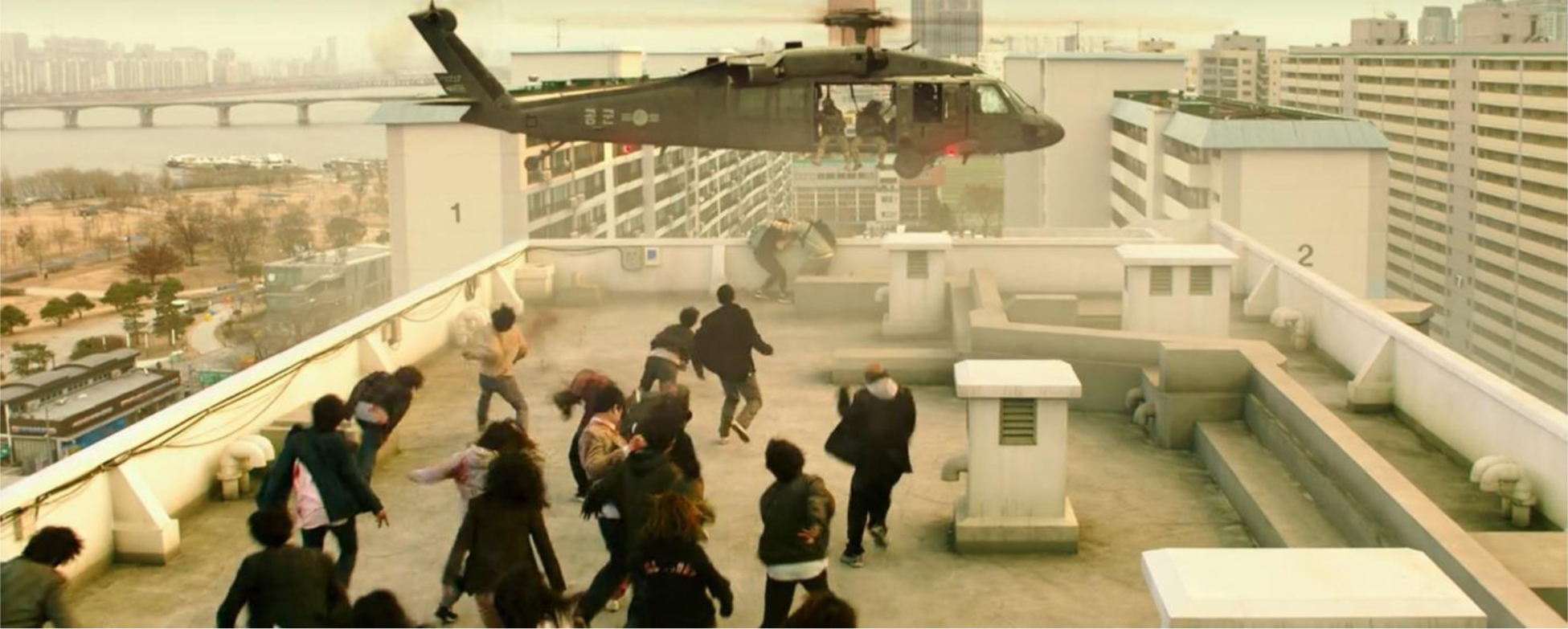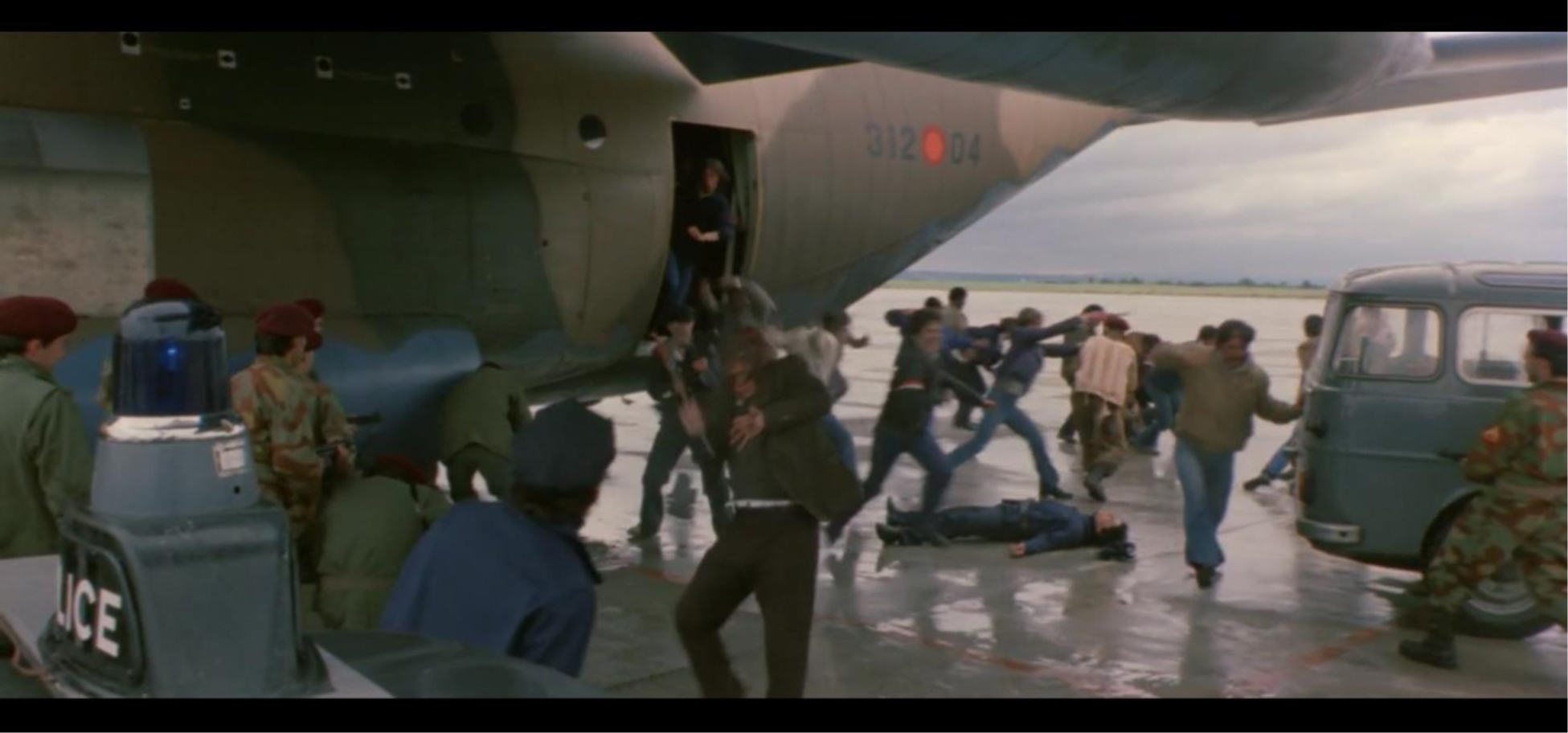Introduction
In the 1970s Italy was on the verge of an epochal change. The debate over the legalization of abortion had finally entered the high chambers of the government and would soon reach the streets of the cities in the form of protests and demonstrations.1 The abortion law was first presented in 1973 and, after five years of harsh clashes, signed off in 1978. Up to that moment, abortion had been considered a crime and punished according to the Italian penal code, but law no. 194 “decriminalized and legally recognized” it.2 Welcomed by the Left, looked with scepticism by Radicals, and repelled by Catholics, the Norms for the Social Protection of Motherhood and about the Voluntary Interruption of Pregnancy3 did not bridge “the deep social division over abortion” that powered the Italian political discourse.4 On the contrary, the parliamentary approval of the law in 1978 triggered a new series of debates revolving around efforts to either overturn or defend legal abortion,5 to the point that in 1981 Italians were called to share their opinion via popular referendums that offered voters the chance to either restrict or further liberalize the regulations.6
It is in this atmosphere of social tension and of uncertainty – roughly six months before the May 1981 referendums – that Umberto Lenzi’s Nightmare City comes out.7 This film, originally titled Incubo sulla città contaminata but also known in the United States as City of the Walking Dead, is included in several ‘Best Zombie Movies’ lists,8 and it tells the story of Dean, a news reporter who tries to survive while his city gets attacked by a growing crowd of people turned by radiations into ravenous blood-drinking creatures. Violent and gory, Nightmare City is relevant for at least two reasons; first, because it inaugurates a significant and eventually rather successful variation on the zombie image: the fast zombie, which Lenzi might have been the first director to portray and that today thrives alongside the more traditional imagery of slow-moving herds; second, as a commentary on the Italian social debates of the late 1970s and early 1980s about the legalization of abortion: Lenzi’s fast ghouls are, in my opinion, the symbolic representation of a rapid social transformation happening in a moment of great confusion. The filmmaker is joining the Italian political dispute of those days by opposing Italian women’s freedom of choice, and although the blood-thirsty creatures of Nightmare City appear to be the most threating element of the film, a closer look reveals that nothing in it is more dangerous to male characters than independent women making independent choices. As Italians get ready to cast their vote in the coming referendums, this film takes side.
In this article I provide a very brief overview of ‘Italian zombie cinema,’ and I contextualize Lenzi’s film both cinematographically and historically. I explain in what ways Nightmare City channels the socio-political tensions of its days and finally, by building a comparison with a recent South Korean film characterized by a similar plot – Cho Il-hyung’s #Alive (2020) – I point out how much the representation of genders has changed within the same film sub-genre. Despite its reactionary undertones – or perhaps because of them – Nightmare City‘s successful aesthetic contributions to the genre are many, and they have participated in shaping the zombie iconography for the years following its release.9
Looking for a Model
Nightmare City belongs to the short-lived and yet very intense moment that followed the international success of George Romero’s Dawn of the Dead (1978).10 Romero’s film, which was the result of a collaboration between the Pittsburgh-based director and the Italian filmmaker Dario Argento, was the second chapter of what it would eventually be known as the ‘Dead’ trilogy. Argento collaborated with Romero since the fundraising stage of the project, he worked at the script, and even had a final say on the non-English-language versions of the film: he cut out the comedic tones and made the European release darker than the American one.11 Possibly because of Dario Argento’s public and publicized endorsement, Romero’s film was a success in Italy. It ended up earning the 24th highest revenue of the 1978/79 Italian film season: zombies had finally caught the attention of Italian audiences12 and – consequently – of Italian producers, who recognized a splendid lucrative opportunity behind the gnawing jaws of Romero’s flesh-eating cadavers.13
Replicating in series and with low budgets successful cinematographic models – something the Italian film industry had done at least since the Peplum galore of the 1950s – is a phenomenon that directly concerned the making of Italian horror cinema in general and of zombie movies in particular: Italian producers immediately decided to ride the wave of Zombi – the Italian title of Dawn of the Dead – and, confident of gaining a profit, ordered the making of Zombi 2. The director would be Lucio Fulci, who had been working on several genres and who had been regularly placing his 1970s giallos in the Italian top-100. The script was meant to be built around Romero’s film, but although Fulci was handed a clear model to follow, he went in a very different direction: if Argento had facilitated the popularization of zombie films in Italy, Fulci was the one who really changed the paradigm and ended up influencing the genre to its core. His Zombi 2 – known in the United States as Zombie – is Italy’s first and arguably best proper zombie film. It was followed by a series of cheaper productions meant to stretch the success of Romero’s film and to replicate Fulci’s international box office achievements. Italian filmmakers had little or no care for the canonicity of the zombie image – if there really was a shared one – and so writers and producers of Italian horror cinema of the early 1980s would sneak zombie-like creatures wherever and whenever they could.14
As it is known, in the first (relevant) zombie film the word ‘zombie’ never occurs,15 but Romero’s Night of the Living Dead provided the viewer with a new, dreading sense of invasion that was intensified by the horrific possibility that any of the protagonists could turn into one of the voracious creatures chasing them.16 In Romero’s film, losing to the ghouls meant becoming one of them, it meant losing one’s identity. Romero did not invent the zombie image, but he made popular the link between the undead roaming the streets and the concept of a global threat. And it is precisely this sense of angst and loss, it is this very feeling of a looming and terminal danger that informs the genre at least since 1968. The unrelentless creatures that surround the survivors’ house are perhaps the sign of an unstoppable menace and of an overreaching and overwhelming change. Their slowness becomes a signature feature of the zombie filmic iconography, and it is now one of the most recognizable traits of the genre aesthetics.17 Zombies are slow and ghoulish in Romero’s films, and they become even slower and far more morbid in Fulci’s take on the walking dead. Italian zombies of 1979 are lethargic and Fulci has them almost sleepwalking towards their victims. That is, of course, until Lenzi decides to speed everything up: all in a sudden, with an abrupt twist on a consolidated formula, the herd start running fast.
Fast Zombies for Fast Transformations
Nightmare City might be the first ‘fast zombie’ movie, but it is hardly the last. Arguably the most successful fast zombies of recent filmography are the ones chasing survivors in Danny Boyle’s 28 Days Later (2002), a British motion picture that refreshed and reignited the sub-genre. Those who went to the theatre back then and started watching the film expecting the usual slow mass of undead walking the streets of London were in for quite a shock: Boyle’s zombies run fast, and they are scary. Not only that: the virus causing people to become enraged and murderous has an extremely short incubation period, so that someone who has contracted the disease would turn in a matter of seconds. The most attentive viewers of Boyle’s otherwise praised film criticized this very aspect of the plot, claiming that a virus with such a fast incubation period would be simple to control and eventually arrest. The same criticism was repeated a few years later, when the cinematic adaptation of Max Brook’s novel World War Z came out featuring larger herds of even faster zombies.18 These criticisms have scientific ground, but a rapid pathogen creating fast zombies is a proposition with great narrative potential and with an evident interpretation: things are changing fast, and you better do something about it. This is even more true if infected people – as in Nightmare City – operate planes and carry guns. Lenzi’s plot was probably inspired by the ‘Seveso Dioxin Cloud,’ a dramatic industrial accident that took place in 1976 nearby Milan,19 and there is a possible connection to Italian domestic terrorism,20 but with their abrupt violence and their deformed features, Lenzi’s zombies are the representative of another alarmingly fast infection for which it seems impossible to find containment: feminism.
In the 1970s feminist groups and associations are at the centre of the Italian cultural debate on the legalization of abortion. Italian women are organizing protests in the streets and openly chanting what a few years earlier they only dared whisper. They are the protagonists of the transformation and, from the point of view of their opposition, the cause of it. They are, therefore, to be blamed for the regression of collective habits21 that sprouted from their claims for independence and is leading society towards amorality and barbarism. In other words, if the apocalypse arrives, one can safely blame it on women. And indeed, women are the favourite victims of the violent murderers of Nightmare City: throughout the film, women are constantly abused in all the possible degrees, from being merely neglected or silenced, to getting stabbed to death and eaten on a floor.
It is expected to see so many women attacked by zombies in an Italian exploitation film: by showing a naked breast or an alluring leg, the filmmaker is targeting the majority of his audience and he is falling in line with what we could call – paraphrasing Laura Mulvey – a patriarchal language of desire.22 Gratuitous displays of nudity are part of the producers’ plans to secure a revenue by triggering the voyeuristic fantasies of the male moviegoers, as it is evident from the eroticism often dominating the scenes. Ian Olney has recently rescued Italian horror cinema from the generalized accusation of being the carrier and promoter of conservative or even reactionary social positions,23 but Lenzi’s film seems to evade any chance of redemption. In Nightmare City women are silly and incompetent, weak and passive, eroticized and ultimately dangerous. They are too emotional, they seem incapable of ever making the right choice, and their behaviour goes in the way of the hero’s actions.
Mulvey suggests that the “presence of woman is an indispensable element of spectacle in normal narrative film” but that “her visual presence tends to work against the development of a story-line.”24 This is the case in Lenzi’s film on at least two different levels: first, when the display of violence on sexualized female bodies “freeze[s] the flow of action” and allows the camera – and therefore the viewer – to linger on a gory and yet erotic spectacle;25 second, when women disrupt the journey of the protagonist by expressing their weakness or their irrationality: a behaviour that always has negative outcomes in Lenzi’s film.
Close-reading Nightmare City: Freezing the Flow
A memorable sequence of Nightmare City takes place in a television studio where a dance routine is being recorded. In some central scenes of such sequence, the action slows down in front of the camera for the violence on sexualized female bodies to be better appreciated.
The atmosphere is the one of Italian commercial television, which was developing in the same years (and that also increasingly promoted the objectification of a gradually less and less clothed female body). There are actual cameras in this sequence, and the subjective shots often replicate the viewpoint of the cameramen and – consequently – of the TV spectators. Lenzi creates an amplification of viewing angles and subjective shots, all pointed at the dance performance. Everybody seems indeed to be looking at the dancers: the crew members who are recording the event in the studio, the director who is giving indications from his booth, and finally the film viewers, whose perspective is multiplied by the proliferation of cameras, monitors, and TV visuals. And although there are both male and female dancers on stage, when their exhibition is interrupted by the arrival of the infected people, only the violence on women is spectacularized and exploited. The first victim actually is a man: one of the channel’s employees finds a dead female dancer in the backstage; he seems hypnotized by the red blood covering the poor girl’s neck and face. He cannot stop looking at it, until one of the infected aggressors appears from behind a curtain and, (deliberately?) off-focus, kills him with a knife. It is a prelude to what it is about to happen to everyone watching from the other side of the screen: like the young man who got stubbed to death after staring at the spectacle of a dead, bloody girl for too long, so the moviegoers are about to witness a great deal of violence, and yet they will not be able to stop watching.
After this first death, the studio becomes hell: killers storm inside, terrifying everybody. At this point, however, the many men who were present a minute before, either disappear or become marginal: on the foreground, it is just the murderers and the women. Lenzi changes the music, going from the diegetic tune to which the dancers were performing to the musical theme of the film; not only that: he chooses to slow down the images, quite literally freezing the flow of the action and expanding the moments of violence that are the selling point of the film. There are cadavers of men on the floor, around the action, but what the camera shows is women getting killed and profusely bleeding. The phallic shape of the weapons chosen by the aggressors invites for some easy speculations, but one cannot avoid noticing the degree of gusto with which the infected killers stub the women on their breasts before using that very entry point to drink their blood. The view is gory and yet erotic, as I was writing, and it is worth observing that – although there are infected women later in the film – a sequence so much built on the spectator/spectacle relation only includes male perpetrators and almost exclusively female victims.
Goriness is a fundamental aesthetic trait of so much Italian horror of the 1970s and 1980s, and it is normal to see the camera lingering on a pulsating wound or a pierced eyeball. And yet Lenzi slows the flow of the images even further in this sequence, as he keeps cutting from the wide-open eyes of the enraged murderers to the exposed and injured bodies of their victims. The act of eroticized violence keeps repeating in front of the TV camera and in the midst of chaos, and still – by the end of the sequence – Lenzi uses a subjective shot of one of the cameras in the studio, frantically tilting and panning around. If everyone is either escaped, dead, or being killed, we must ask ourselves who’s behind the lens. Perhaps one of the ‘zombies’ is: they might very well be able to use a camera since they can fly airplanes and drive cars. Or it might be the sadistic viewer of the film, who is perhaps not less enraged and not less cruel that any of the aggressors, and who is – through Lenzi’s expert hand– operating the camera in the desperate search of yet another naked breast, and of yet another glimpse of blood. For a moment the filmic illusion is possibly ruptured, but the viewer’s identification with the action has never been stronger.
Close-reading Nightmare City: Disrupting the Journey
Several sequences of Nightmare City are built around the relationship between the protagonist Dean (Hugo Stiglitz) and his wife Anna (Laura Trotter), and they all highlight both her incapacity of making the right decision and the dangerous burden she represents throughout the story for her husband. Anna disrupts Dean’s journey consistently, and so do other women in the film.
In a significant sequence, as Dean and Anna are trying to find refuge, they see a church. Dean orders his wife to wait for him outside and explores the belltower only to find a dead soldier. He goes back to Anna, and he is ready to move on, but she is not convinced: thinking that these murderers might be vampires, Anna decides to enter the church hoping to be protected by its holy ground. Anna’s misunderstanding is typical of negative characters in post-apocalyptic fiction: she is not able to read the situation, she is incapable of understanding the new world, and therefore she is narratively doomed to fail. Dean – who is instead very much able to cope with the new dangerous reality and with its threats – disagrees with her, but she nevertheless enters the building. He follows her, unconvinced. A tracking shot of them walking down the aisle is almost reminiscent of their marital status. As the camera frames them in such fashion – as a married couple in a church – she starts sprinting alone towards the altar: the husband is left behind, perplexed and cautious. There is a priest, whom she immediately addresses while Dean still diffidently stays in the back. Of course, the priest is also infected, and he immediately attacks them with a big candle. A fight begins and Dean eventually smashes the head of the priest with a large brass candle holder: his wife just made him kill a priest on a church altar. From the gory sight of the pulped head Lenzi cuts to a total of the scene, with Dean slowly walking away from the priest’s body and Anna standing at the very centre of the frame, traumatized and guilty. As Dean reaches her, the camera cuts on a close-up of Anna’s face on which we hear his line: “So much for the theory of vampires!” he says ironically. Lenzi zooms on Anna’s eyes and then cuts to Dean, who lowers his in disappointment.
The husband tried to lead his wife on the right path, but she kept diverting from it, and by stubbornly getting closer to the holiest space of Christian rituality she had it desecrated with violence and blood that were not necessary until she made them so. The recipe is simple: when the woman follows her husband’s directions precisely, everything goes fine. If she debates or – worse – if she takes initiative, the worst will happen. Indeed, following Dean, Anna almost manages to make it all the way to safety, but at the end of the film – when they are just one step from being rescued – it is once again her ineptitude that ultimately kills her: unable to hold on a helicopter extraction rope, she falls before Dean’s terror. She falls because, for the last time, she does not do what men tell her to do (this time another male character, Major Holmes, joins Dean in giving her orders): “Don’t look down, Anna!” and “Don’t let go!”. She does both, instead, and she falls, hitting with her body the roller-coaster rails they just climbed to reach the chopper. That is when Dean wakes up: the entire movie was but a nightmare.26
Who is Behind Nightmare City?
A familiar trope, the ‘it-was-all-a-dream’ structure of Nightmare City supports my argument that Lenzi’s film is a semi-open declaration against women’s freedom of choice. In 1980, as I stated above, Italy was going through a lively and deeply felt political and moral debate that shook the belief systems of many and kept at stake the sorts of an entire society. Law no. 194 had passed, but if you rooted for the conservative side of this quasi-eschatological battle, there was still hope for things to be put back in place: if the May 1981 referendums went in the right way, the ban on abortion would be re-established, the disaster would be avoided, and the nightmare would really be over. When Dean wakes up from his dream, at the end of the film, he starts repeating the very same actions from the opening sequences. All is identical up to the crucial point when the zombie outbreak was originally revealed. When we get again to the moment in which, the first way around, zombies exited the plane and started shooting at people, the frame freezes leaving the viewer uncertain whether things will repeat identically one more time. A caption reads “The nightmare becomes reality” and the closing titles begin running. Just months ahead of the referendums, Lenzi’s film is almost providing his viewers with voting instructions.
Nightmare City was co-produced by Diego Alchimede’s Dialchi Film27 in association with the Madrid-based Lotus Films International and the Mexican Televicine. The director, Umberto Lenzi, had been accused to be a fascist and a conservative at least since his ‘tough cop’ movies of the 1970s – the so-called poliziotteschi – and he publicly defended himself from these allegations by stating to be an anarchist instead.28 Finally, the most prominent and the one with the longest list of credits among the writers of the film was Piero Regnoli, who – by the time of his passing in 2011 – had directed twelve and written over one hundred films. In a career that encompassed most genres, Regnoli’s scripts often crossed the borders of erotica in both themes and imagery, with titles such as That Malicious Age (1975), The Sweet Aunts (1975), The Sins of a Young Countryside Wife (1977), and The Malicious Whore (1979), among several others.29 These films make drawing a profile of Regnoli a fascinating and somehow hard task: an experienced manipulators of genres jokingly known in his circles as the “pornovampirologist,”30 Regnoli had been for many years a prominent film critic for the Osservatore Romano (the daily newspaper of the Holy See) and a writer on the Rivista del cinematografo, arguably the most important Catholic film journal in Italy.31 Not only that: Regnoli had regularly been a representative of the Christian Democrats in film festival committees, and more than once he had operated on their behalf – or he had been asked to do so. For instance, a board presided by Regnoli had denied the necessary clearance to Cecilia Mangini’s feminist documentary Essere donne (Being Women, 1965), which lacked – according to the committee – both technical and artistic qualities: a film that was being awarded abroad for both its content and its style, was being censored in Italy.32 More famously, Regnoli had been tasked by the Christian Democrats to boycott Luchino Visconti’s Senso at the 15th Venice International Film Festival: as reported by many sources and as Regnoli himself has maintained, he was told by a Christian Democrat Minister to go to the Festival as a juror and to use the large sum of money he had been provided with to make sure that a Communist film like Senso and a Communist director like Visconti did not win any award.33
A team composed by a trio of production companies based in Catholic countries, an allegedly right-wing director, and a head writer with the complex curriculum of Christian ‘sniper’ critic and pornographer is quite a lot, but it is not enough to prove that Nightmare City is a thesis film meant for political propaganda. However, these elements are sufficient indicators of the reason why both the narrative and the imagery of the film took a certain route. The fact that Nightmare City eventually channeled and amplified the emotions and the political drive of the most conservative side of the social debate of those days is as unmistakeable as the blatant success of the progressives in the 1981 referendums.
In spite of much pro-life propaganda and notwithstanding the capillary presence of the Catholic Church, the Italian citizens who decided to express their will in May 1981 overwhelmingly chose to keep the abortion law, with more than 60% of the voters going against the abrogative referendum proposed by the Christian Democrats. The outcome was interpreted as a victory of the Left, but it was truly the defeat of an obsolete political system based on obsolete ideologies and the clear “evidence of the growing political and cultural opposition to the Christian Democratic political hegemony that had prevailed since 1948” in Italy.34 It was the end of a world and the beginning of a new one: the Catholic Church and the Democrazia Cristiana got pushed back by new ideals made of individualism and pragmatism35 that crossed the country throughout and contaminated minds from both sides of the political trenches.36
Conclusions
Apocalyptic fiction is always either revolutionary or reactionary because it flourishes in times of great unrest and of transformation, and it channels people’s anxiety and hope for the changing world. As Robin Wood has famously argued, horror cinema holds the potential of both revolutionary and reactionary inflections, and if some films are carriers of progressive and radical elements, others promote conservative stances.37 It is then not surprising that while Nightmare City looks at change with disdain and even fear, other works of narrative built on similar premises do the very opposite. Cho Il-hyung’s #Alive (2020) is a good example: based on Matt Naylor’s 2019 script Alone, this South Korean film is a descendant of Lenzi’s movie for both the aesthetics of the ferocious zombies and for the focus on gender issues. In other words, #Alive is a proof that Lenzi’s variant of the zombie virus has survived all the way to our days, but also that it has done so by mutating into something different: Cho Il-hyung’s film is about a man and a woman trying to survive while stuck in an apartment complex surrounded by a violent herd of fast zombies, but if Lenzi’s protagonists were an alpha male and an inept woman who kept making his life harder, the main characters of the Korean horror embody opposite paradigms. He is a gamer (actor Yoo Ah-in) who still lives at his parents’ and seems neither mentally nor physically equipped for the apocalypse, while she is an independent, smart woman and a semi-professional climber (Park Shin-hye) who is not afraid of making bold decisions and of acting upon them. These two very delineated profiles will smoothen up throughout the film, as the two characters get closer to one another. Eventually – and this is one of the messages of #Alive – it is by connecting and collaborating that Oh Joon-woo and Kim Yoo-bin survive till the end: something that never really happens in Nightmare City, where it seems clear that Dean would be much better off on his own.
The camerawork of the Korean film is not suggestive of any gender-based power relation between subjects and the acts of violence do not seem at all to imply any form of eroticism or sexualization, but a particular sequence of Cho Il-hyung’s film echoes Nightmare City quite clearly. At the end of #Alive, the two protagonists are trapped on the roof of an apartment building. The zombies are about to get them when a military helicopter comes to their rescue. The scene replicates the roller-coaster sequence from Nightmare City, but this time the main characters manage to climb on the helicopter without trouble. It also turns out that the rescue team was able to locate them because of a social media posting that the male protagonist had published at the beginning of the film: a way of saying, forty years after Lenzi’s film, that the spectators and their identification dynamics have changed, and that not only it is acceptable for the girl to be the strongest and most fit of the two, but that his being a bit of a geek is good as well. In a film where the journey of the protagonist is not slowed down, but rather sped up, by the presence of a woman, the model has changed: the female lead does not have to be an incompetent wife and the man does not have to be a macho.
The fast zombies of #Alive, like those of Nightmare City, are an allegory for the pace of change; the protagonists of the Korean film beat the zombies by evolving throughout the story: to a sudden and overturning external transformation they respond by changing and adapting. The protagonists of Nightmare City, on the other hand, have so little an evolution, that at the end of the film the story literally starts over. The finale of Lenzi’s film is the call for a second chance – for the hope that things can end up better after a new attempt – but it is first and foremost a reactionary stance that responds to transformation with stillness.
#Alive is tuned with current gender representation and the truth is that perhaps even Nightmare City was, back in its days. The 1981 referendums went the way of the Left: “Women won” the Italian newspapers titled on their first pages, and indeed women had retained their right to terminate pregnancy and to self-determinate,38 but there was an important portion of population that, although politically defeated, had not been anthropologically eliminated. The opposition to the abortion law did not stop with its enactment in 1978, and it did not stop with the outcome of the referendums. Lenzi’s film is therefore an important document that speaks to and about the climate of the late 1970s, and it is interesting to watch it now and see what it still has to say about the people who made it, the people it was made for, and the people to whom it is still relevant.39
The divided and divisive Italy of 1980, which had indirectly produced Nightmare City, was eventually in the process of leaving behind the long and extenuating season of domestic terrorism that had tormented the nation for almost twenty years. At the same time, it was close to enter the decades-long era of Silvio Berlusconi’s media and political empire. The results of the 1981 referendums constituted an important leap forward for Italian society, but the political divisions that had kept the nation in constant anxiety since the 1960s were not to disappear: they would merely be diluted in the neoliberal pragmatism of a new generation of capitalists. The world was not to be better, but it would get a better and more optimistic narrative: the dancers would keep dancing in TV studios that looked very much like the one of Nightmare City and the good news was that there were no ravenous killers hiding behind the scenes and no reason for the show to be interrupted. Cameras, however, kept lingering right where they used to. Cameras kept staring, and so did viewers, but there was no longer fault in either staring or being stared at: no need for punishment, no need for blood, no need for a wakeup call. If you stay under the spell long enough, Berlusconi’s Italy seemed to say, the nightmare will turn into a wonderful dream. Why would you ever want to wake up from that?
Author Biography
Alberto Iozzia is a Lecturer at Boston University. His research focuses on speculative fiction and on post-apocalyptic literature and film. He teaches both undergraduate and graduate courses on the history of Italian cinema and on Italian film genres. His secondary field of studies is Italian theater, whit a focus on modern Italian theater and on Teatro di Narrazione.
Notes
- For a rather broad overview of the legal history of abortion in Italy and a very comprehensive reconstruction of the events leading to and following the approval of law no. 194 and the 1981 referendums, see a chapter by Marina Calloni, “Debates and Controversies on Abortion in Italy,” in Abortion Politics, Women’s Movements, and the Democratic State: A Comparative Study of State Feminism, ed. Dorothy McBride Stetson (Oxford: Oxford University Press, 2002), 181-203. For an exhaustive account of the facts, I suggest also Giambattista Scirè’s L’aborto in Italia. Storia di una legge (Milan: Mondadori, 2008). In this article, I indirectly quote also from a brief essay by Andreas Iacarella: “Breve ricostruzione storica dell’approvazione della legge n. 194 del 1978. Dall’avvio del dibattito culturale ai referendum del 1981,” https://www.academia.edu/10538787/Breve_ricostruzione_storica_dellapprovazione_della_legge_n_194_del_1978_Dallavvio_del_dibattito_culturale_ai_referendum_del_1981?auto=download. ⮭
- Calloni, 182. ⮭
- In Italian: Norme per la Tutela Sociale della Maternità e sull’Interruzione Volontaria della Gravidanza. ⮭
- Calloni, 190. ⮭
- Calloni, 183. ⮭
- As Marina Calloni explains, once the law was enacted in 1978, “providing abortion services became a legitimate responsibility of the state” (191). The Christian Democrats and their pro-life allies soon presented their referendum: they were asking to abrogate law no. 194 completely and to go back to the pre-1978 normative status. Another part of the referendum was instead proposed by the Radicals and supported by many feminist groups that were critical of the many compromises and limitations that weakened, in their opinion, the 1978 law. There were three possible outcomes of the 1981 referendums: law 194 would be kept as it was (in case of defeat for both the Catholic and the Radical proposals); law 194 would be revoked all together and abortion would be considered a crime as it had been until 1978 (if the Catholic proposal won); law 194 would be kept but modified toward further liberalizations (in case of success for the Radicals). ⮭
- According to IMDb, Nightmare City is first released in Italy on December 11, 1980. Two days later, it is released in Japan and on December 19, 1980 it is in the theaters of West Germany. It is distributed in the United States almost two years later, on November 18, 1983 while it reaches the U.K. only in 1985. https://www.imdb.com/title/tt0080931/releaseinfo ⮭
- Two of the many recent articles and online charts listing Lenzi’s film among the best and most memorable zombie films include Jim Vorel, “The 50 Best Zombie Movies of All Time,” Paste Magazine, October 9, 2020, https://www.pastemagazine.com/movies/the-zombies/the-50-best-zombie-movies-of-all-time/ and Abby Monteil, “60 Best Zombie Movies of All Time,” Stacker, October 27, 2020, https://stacker.com/stories/4751/60-best-zombie-movies-all-time. ⮭
- One should not forget, also, that Nightmare City is a relevant Italian example of a sub-genre of the zombie movie: the ‘infected people’ plot, which is a story where zombies are not necessarily reanimated corpses, but rather men and women who contracted a disease or underwent a mutation that changed them into zombi-esque creatures. The differences between Lenzi’s infected crowd and the usual zombie herd is perhaps inconsequential for the sake of this essay – as whether the craving for human flesh comes pre or post-mortem might be of secondary importance here – but it is worth pointing out that Lenzi offered in Nightmare City yet another formula – at once derivative from previous models and original: while a film like George Romero’s The Crazies (1973) already proposes the idea of people turned homicidally insane by an external agent, Lenzi added to his own crazies a slight physical mutation and an unsatiable thirst for blood that made them more similar to zombies than to mere sick people. They are more similar to monsters than to anything else, and they might therefore be considered the progenitors of the many fast zombies to come. Lenzi himself had little doubts on how to classify his film: to Quentin Tarantino, who let him know how much he had appreciated his zombie flick, the Tuscan director replied that there were no zombies at all in Nightmare City, only infected people. Tarantino recalls the episode in an interview from 2008, in which he also declares that the zombies in Robert Rodriguez’s Planet Terror are inspired by the infected killers of Nightmare City. This rather entertaining video, in which Tarantino even proposes an impersonation of Lenzi, can be found at https://www.youtube.com/watch?v=qtR5Cxscnu4&t=58s. ⮭
- A lot has been written on the Italian zombie filone. Among others, see Donato Totaro, “The Italian Zombie Film: From Derivation to Invention,” in Fear Without Frontiers: Horror Cinema Across the Globe, ed. Steven Schneider (Godalming: FAB, 2003), 161-173. ⮭
- James Gracey, Dario Argento (Harpenden: Kamera Books, 2010), 191-192. ⮭
- George Romero’s debut film Night of the Living Dead (1968) was distributed in Italy in the summer of 1970, but without success: for several reasons, it did not obtain either the box office results achieved in the United States or an immediate impact on Italian popular culture and filmmaking. ⮭
- The rankings are published online on the blog Hit Parade Italia and their data are collected from Il Giornale dello Spettacolo (the periodical of AGIS) and Lo Spettacolo (the periodical of SIAE). About this, see the 2005 webpage that describes the criteria used to populate the charts: “Classifiche Film: introduzione e nota metodologica,” http://chartitalia.blogspot.com/2005/08/classifiche-film-introduzione-e-nota.html. For a more in-depth analysis of the factors driving the birth of the Italian zombie-cycle following the release of Romero’s Dawn of the Dead see instead Todd Platt, “A Comparative Analysis of the Factors Driving Film Cycles: Italian and American Zombie Film Production, 1978-1982,” Journal of Italian Cinema & Media Studies 5, no. 2 (2017), 191-220. ⮭
- This approach was not new: Italian horror of the late 1950s and of the 1960s was full of vampires that were not really canonical and that had little or nothing to do with their literary archetype. In those years, however, vampires were in fashion as much as zombies will be in the early 1980s, and producers would feel much more at ease when a vampire appeared in the title of the film, if not actually on screen. Zombies are known, instead, not to have a direct literary ancestor, and such trait contributed greatly to their very fluid image. To read more about the horror imagery of Italian genre cinema see Andrea Bini, “Horror Cinema: The Emancipation of Women and Urban Anxiety,” in Popular Italian Cinema: Culture and Politics in Postwar Italy, ed. Flavia Brizio-Skov (New York: I.B. Tauris & Co Ltd, 2011), 53-82. ⮭
- The creatures in George Romero’s Night of the Living Dead (1968), which anyone today would instantly identify as zombies, were actually called ‘ghouls’ by his own creator: it was Cahiers du Cinema that recognized those revived cannibal cadavers as zombies, as the American directors himself recalls in a 2005 interview that can be found in Donald Clarke, “George A Romero: ‘I never called ours zombies. We thought of them as ghouls’,” The Irish Times, September 23, 2005, https://www.irishtimes.com/culture/george-a-romero-i-never-called-ours-zombies-we-thought-of-them-as-ghouls-1.496394. ⮭
- Zombies appear in cinema several times after featuring in Victor Halperin’s White Zombie (1932) – probably the but first feature length zombie film – but they really got a place in the pantheon of movie monsters only when their image was first linked to the idea of contamination: as soon as the characters of a film began turning into zombies after having been in contact with them, the Haitian iconography of the cursed slave informing Halperin’s film was rethought and enlarged to a global and apocalyptic dimension. One must not forget that the concept of a human returning from the dead after having been infected by an undead creature was not new: let us just think about Bram Stoker’s Dracula (1897). By eliminating the Haitian figure of the evil sorcerer or the charming persona that is Count Dracula, and by keeping the concept of a transmissible condition that can turn living people into walking cadavers, filmmakers transformed a local threat into a potentially worldwide menace. This is what George Romero did in Night of the Living Dead (1968). ⮭
- This is not the right place to do so, but there is enough visual evidence connecting the Anglo-Italian co-production The Last Man on Earth (1964) and Night of the Living Dead to make the argument that the Italian vampire movie starring Vincent Price had an influence on Romero’s 1968 film. Ubaldo Ragona’s film is the first filmic adaptation of Richard Matheson’s 1954 novel I Am Legend, and we know for sure that Romero was inspired by Matheson’s novel when working on the subject of Night of the Living Dead, as he has confirmed that information multiple times. Such statement can be found, for instance, in George Romero’s preface to screenwriter John Russo’s novelization of their film: John Russo, Night of the Living Dead (New York: Warner Books, 1974), 5-13. Matheson vampires lose a lot of their canonical traits in Ragona’s film, so that Vincent Price’s slow and clumsy opponents have ultimately more in common with the ghouls of Night of the Living Dead than with their literary source. ⮭
- In his June 27, 2003 review of 28 Days Later Roger Ebert points out that “Darwinians will observe that a virus that acts within 20 seconds will not be an efficient survivor; the host population will soon be dead--and along with it, the virus”, but he also adds that having such a fast pace serves the story in at least three different ways: “That 20-second limit serves three valuable story purposes: (a) It has us counting “12 ... 11 ... 10” in our minds at one crucial moment; (b) it eliminates the standard story device where a character can keep his infection secret; and (c) it requires the quick elimination of characters we like, dramatizing the merciless nature of the plague.” In 2013 Ezra Klein makes similar claims regarding Marc Forster’s World War Z, and he reflects on the fact that a virus with such a speedy incubation time would be good news for humans: “Although fast zombies appear much scarier on-screen, their speed is their weakness. Or, to be more exact, their speed is their virus’s weakness. Fast zombies don’t just run fast; they become zombies fast, too. In ‘World War Z,’ the time between being bitten by a zombie to being reborn as a sprinting, snapping shock troop of the undead yourself is less than 15 seconds. That’s bad news for anyone in the immediate vicinity. It’s good news, though, for anyone who isn’t.” Ebert’s review can be found in his website, it is titled “28 Days Later” and it was published on June 27, 2003, https://www.rogerebert.com/reviews/28-days-later-2003. Kleine’s article, on the other hand, appears on an online issue of The Washington Post, it is titled “Don’t Be Afraid of Fast Zombies” and it was first published on June 28, 2013. It can be retrieved at the following address: https://www.washingtonpost.com/news/wonk/wp/2013/06/28/dont-be-afraid-of-fast-zombies/. ⮭
- The Time lists the Seveso incident in their “Top 10 Environmental Disasters.” For more information see Gilbert Cruz, “And The Earth Cried,” Time, May 3, 2010, http://content.time.com/time/specials/packages/article/0,28804,1986457_1986501_1986449,00.html. ⮭
- The years between 1978 and 1981 are to be remembered for the important steps taken by Italians in the sphere of social rights, but they are also the years closing a long season of domestic terrorism known as “Years of Lead” or anni di piombo. These final three years have entered the memory of the nation for the increasing violence, the growing number of terrorist attacks, and for some dramatic events capable of shaping the history of the country. The abduction and assassination of former Christian Democrat Prime Minister Aldo Moro by the hand of the Red Brigades (1978) and the bombing of the Bologna Train Station with its eighty-five victims (1980) are perhaps the most marking moments of such a dark period of the Italian Republic. Although I do not believe that Nightmare City is about domestic terrorism, it is reasonable to think that Lenzi borrowed from common social fears and from a shared national imagery when having his ‘infected’ characters behave almost like terrorists: it is worth mentioning, for instance, that the zombies first enter the film deboarding an airplane and branding machine guns, as if they were executing a political coup. ⮭
- Iacarella, 3. ⮭
- Laura Mulvey, Visual and Other Pleasures (New York: Palgrave, 1989), 16. ⮭
- See Ian Olney, Euro Horror: Classic European Horror Cinema in Contemporary American Culture (Bloomington: Indiana University Press, 2013), 3-22. ⮭
- Mulvey, 19. ⮭
- Zombies are referred as aggressors in the film, and women are their victim of choice in most cases. The ‘hospital attack’ sequence is rich of examples, but a very emblematic one is the scene of the pond, where one of creatures has chosen a nurse as his next victim and relentlessly chases her until he finally gets her in the middle of a shallow lake. The scene is made even more interesting by Lenzi’s choice of having the camera taking the point of view of another zombie, witnessing the predation with a pleasure that is meant to be shared with the target audience of the film. ⮭
- Major Warren Holmes, played by actor Francisco Rabal, is another alpha male in the film, and he perhaps embodies an even more chauvinist paradigm than Dean himself. The general’s wife, Sheila, fails to follow some simple directions he had given her, and she becomes infected. Towards the end of the film, in a typical trope of zombie films, Holmes is forced to kill her, before she kills him. ⮭
- The short-lived Dialchi Film produced only two films: the last one is Nightmare City and the first is Rino Di Silverstro’s Werevolf Woman (1976), an interesting depiction of ambiguous femininity rich in violence and eroticism. The Italian tagline of the film is “Il sesso la portava alla follia e la sua bellezza si trasformava in orrore” which in English sounds like “Sex drove her crazy and her beaty turned into horror” (La Stampa, May 14, 1975, 15). ⮭
- It was neither the ‘cannibal’ nor the giallos, but the ‘tough cop’ films known in Italy as poliziotteschi that provoked the accusations of fascism. For a relatively recent reference, see Timothy Campbell, “Violent Cities: Virility and B-Movie Fascism in the Cop Films of Umberto Lenzi,” Paradoxa, 20 (2006), 185-200. What, in my opinion, triggers such interpretations – and what ultimately gives substance to them – is the sociohistorical context of Lenzi’s films: tough cops are not fascist per se, but tough cop films set in actual Italian cities during the hottest years of domestic political terrorism cannot but recall the fascist imagery of strong and merciless male leadership. Lenzi’s debated political views are not to be linked to infamous movies such as Orgasmo (1969), Man from the Deep River (1972) or Eaten Alive! (1980), but rather to crime films such as Almost Human (1974), The Tough Ones (1976), or Free Hands for a Tough Cop (1976). ⮭
- The translations of some of the titles are mine, since not all of them were distributed in English-speaking countries. The original titles are: Quella età maliziosa (Silvio Amadio), Le dolci zie (Mario Imperoli), I peccati di una giovane moglie di campagna (Alfredo Rizzo), and Malabimba (Andrea Bianchi). ⮭
- Martina Trocano, “Ricordo di Cecilia Mangini. Con una intervista inedita,” Artribune, January 24, 2021, https://www.artribune.com/arti-visive/fotografia/2021/01/cecilia-mangini-intervista-inedita-rip-documentario/ ⮭
- For a comprehensive account of the history and political engagement of this journal, see Elena Mosconi (ed.), Nero su bianco: Le politiche per il cinema negli ottant’anni della ‘Rivista del Cinematografo’ (Rome: Edizioni Fondazione dello Spettacolo, 2008). ⮭
- Trocano, “Ricordo di Cecilia Mangini. Con una intervista inedita.” ⮭
- The episode is recounted in Gaia Servadio, Luchino Visconti: A Biography (New York: Franklin Watts Inc., 1983), 139. Piero Regnoli had also been a relentless critic of Roberto Rossellini’s work, as it clearly appears on the pages of Andrea Martini (ed.), L’antirrossellinismo (Turin: Edizioni Kaplan, 2010). These criticisms had a political and ideological basis, as argued by Tomaso Subini in the chapter titled “La critica e Francesco giullare di Dio” (55-72). ⮭
- Calloni, 192. ⮭
- Iacarella, 10. ⮭
- Calloni, 193. ⮭
- Robin Wood, Hollywood from Vietnam to Reagan …and Beyond (New York: Columbia University Press, 2003), 170. ⮭
- Il Messaggero, a Roman daily newspaper, titled “Hanno vinto le donne” and, commenting the results, pointed out the great disappointments of the Catholic bishops for a “defeat of unexpected proportions” (Il Messaggero, May 19, 1981). ⮭
- In addition to this, Nightmare City is a splendid example of transnational cinema, the power of which is testified by the global distribution and the success following its immediate international release, and by its echo in films and genre fiction that directly and indirectly refer to Lenzi’s work still today. When Nightmare City was first distributed in the United States in 1983 the political undertones were probably lost beneath the gore and the clumsy dubbing, and it is complicated to determine now what Lenzi’s film meant for the American audience of those days. In future research I might further investigate the shifting political messages floating underneath the surface of transnational genre cinema, and I could better analyze the change in interpretation that the same work of fiction provokes over diatopic or diachronic variants. It is however clear to me that Nightmare City can today be re-watched and re-appreciated in America considering - among all – the recent legal and political choices that have led the Supreme Court of the United States to overturn Roe v. Wade within an atmosphere of social tension and division that surprisingly share some common points with the Italian political landscape of the late 1970s. ⮭


